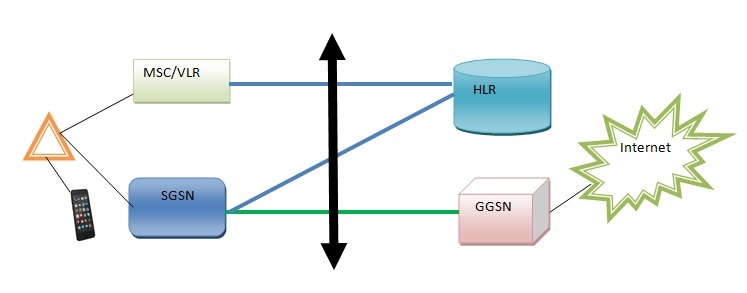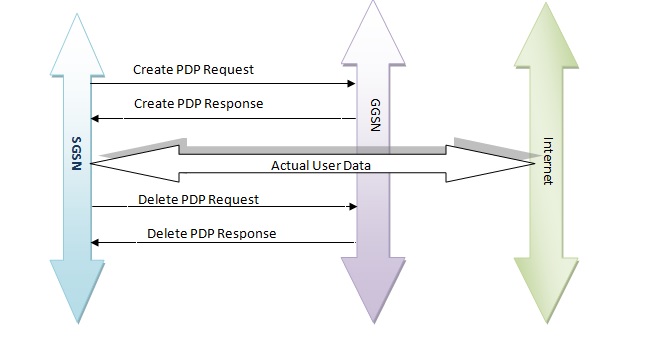What is SGSN?
SGSN’s full form is Serving GPRS Support Node. A mobile phone connects to SGSN for the internet while roaming. VLR (for voice) and SGSN for data keep changing when a subscriber roams from one location to another. After how much distance is traveled, the roaming nodes will change depending on the area covered by each node.
In a 2G network, the mobile device connects to BTS over a radio channel, BTS connects to BSC, and BSC connects to SGSN ( and VLR, too, for voice). The protocol between BSC and SGSN is BSSMAP.
In the 3G network, the mobile device connects to NodeB over a radio channel, NodeB connects to RNC, and RNC connects to SGSN. The protocol between SGSN and RNC is RANAP for location and registration. For data tunnel management protocol is GTP.
SGSN Interfaces :
A node in telecom never works standalone. It connects to the other nodes over various interfaces. Each interface has its protocol stack. The following are the interfaces that connect the SGSN with other nodes in the mobile network.
Gn interface: The Roaming-SGSN connects to the GGSN over the Gn interface. Gn interface has a GTP protocol. GTP uses the services of the UDP protocol.
Gr Interface: Interface between Roaming-SGSN and HLR. It uses the Ss7 protocol stack.
S6d Interface: It is between HSS and SGSN. HSS is the subscription database in-home network for the LTE network. Diameter is the protocol for the s6d interface. The diameter protocol uses TCP or SCTP.
Iu Interface: Interface between SGSN and RNC. RANAP is the protocol. RANAP runs over a Connection-oriented SCCP protocol.
Mobile phone registration for data:
First, a mobile phone must register itself with the network for GPRS to use data services. For registration, the SGSN sends authentication and update GPRS location requests to the HLR, located in-home network. The protocol between SGSN and HLR is ss7. GSM MAP protocol has messages for GPRS authentication and an updated location procedure. GSM MAP uses SS7 layers as transport. Once a subscriber is authenticated and registered with the home network, a mobile device displays data signs. In most cases, it is E for 2G and H for 3G.
Data Access from a mobile phone:
A subscriber can browse the internet after successfully registering the phone for data. This requires setting up a GTP tunnel with the home GGSN. SGSN does signaling for tunnel setup with the GGSN. This involves the setup of the PDP context between the two nodes.
PDP Context setup :
- SGSN sends the Create PDP Context Request to the GGSN.
- Upon receiving the PDP context request, GGSN verifies if a subscriber can access data with the requested Quality of service.
- If GGSN allows the data, it sends the PDP context response as accepted. Else rejects the PDP Context.
- GGSN allocates an IP address to the device.
After a successful PDP context setup, actual user data flow between a mobile device and an external packet network

